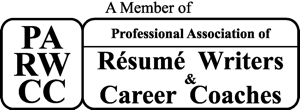iStockphoto | Harvepino
According to a recent Wall Street Journal article, “The New Headache for Bosses: Employees Aren’t Quitting,” (11/6/23) the Great Resignation has given way to record low attrition rates at many large companies. Nobody is going anywhere, which means two things. First, when financial projections overshoot reality employers balance the budget by cutting staff. Second, if you’re not cut, record-low attrition rates mean record-low promotions.
For example, let’s say you work for one of the companies featured in the WSJ article, like a big bank or pharmaceutical company, and your career is suddenly on pause because of low attrition, looming and corresponding layoffs, and a contraction, if not elimination, of internal advancement opportunities coupled with a more restrictive and competitive external job market. That puts high-performing and ambitious professionals in an epic bind.
The immediate issue is you may be caught up in a wave of terminations. If you remain where you are, you’re stuck and you’re not learning the new skills and gaining the next level of work experience that advances careers.
What do you do if there’s nowhere to go?
1) Acknowledge the situation. The shift from mass quitting to no quitting has been so swift and unexpected, that you may not be aware of this trend and its potential consequences. The same applies if you work somewhere that’s the opposite in every way to the corporate behemoths that were the focus of the WSJ article, but your employer’s existing structure has built-in limitations. Take a look at your situation and make a sober and honest decision about whether or not your personal circumstances are likely to be affected by the current labor stagnation.
2) Assess your options. If you believe your job may be in jeopardy or you can’t advance in your current position, take an honest look at your situation. For example, let’s say you work for a company where the top-level jobs earn a percentage of sales. Naturally, if you do not make a percentage of sales you want to advance into the role that does. If you can’t, it follows you would want to go somewhere you can. What can you do to help yourself land a position like that somewhere else?
3) Stretch the boundaries of your job. Being stuck in your job doesn’t mean you have to be complacent. Chart out new initiatives and responsibilities. Develop novel approaches to squeeze all you can out of your position. If you elevate your experience and visibility, it can only help down the road. On your resume, self-initiated growth demonstrates a proactive mentality and an advanced level of professionalism.
4) Take opportunities where you can. Training? Take it. Upskilling? Do it. Earn professional certifications. Attend conferences. Join professional organizations. Connect with alumni groups. Volunteer. Fill your quiver with as many arrows as you can.
5) Speak to your manager. If you work at a company where the pathways to advancement are vague, speak to your manager. Ask what they are. Have a candid conversation about your personal goals and how best to position yourself to reach them, whether it’s with your current employer or into the great unknown.
6) See what’s out there. You may be a member of the 73% of people who reported this year that they plan to stay at their jobs, but you may consider that now is the time to explore other opportunities. Just dip your toes in. You may discover the grass really is greener where you are, but you don’t really know until you do the research.
7) Do your best work. Top-performing employees typically rise to the top. If you do an exceptional job, advancement will come your way. Some extra patience and innovation may be needed in the current climate, but your professional accomplishments will be rewarded.
Philip Roufail contributed to this article.
Scott Singer is the President and Founder of Insider Career Strategies Resume Writing & Career Coaching, a firm dedicated to guiding job seekers and companies through the job search and hiring process. Insider Career Strategies provides resume writing, LinkedIn profile development, career coaching services, and outplacement services. You can email Scott Singer at scott.singer@insidercs.com, or via the website, www.insidercs.com.






